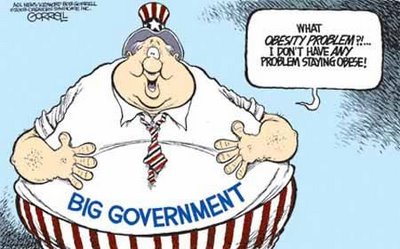The Federalist Papers were written to explain the Constitution to the American people.
Federalist No. 10, by James Madison, is perhaps the best known. It explains that a major purpose of our U.S. Constitution was to control the special interest groups, or factions.
He wrote, that there were two methods of controlling factions:

One way would be to remove the causes of faction. He pointed out that,”the latent causes of faction are thus sown in the nature of man.” We all have our different opinions of how things should be done and we cannot change this inherent nature. It could be done by government force that suppresses dissenting opinions but this would destroy liberty. Madison concluded that controlling the cause of faction was not the way to go.
The other way would be to control the effects of faction. This was done by limiting the power of the federal government through the constitution. Then, “The influence of factious leaders may kindle a flame within their particular States, but will be unable to spread a general conflagration through the other States”
Once one accepts this principle, things begin to fall into place. Of course this means that we must fight for our various causes at the state level, not the national level. Today, most people in the United States have abandoned this idea.
Here is how it happened.
In 1913, the U.S. adapted the second and fifth plank of the Communist Manifesto:
1. Abolition of property in land and application of all rents of land to public purposes.
 2. A heavy progressive or graduated income tax.
2. A heavy progressive or graduated income tax.
3. Abolition of all rights of inheritance.
4. Confiscation of the property of all emigrants and rebels.
5. Centralization of credit in the hands of the state, by means of a national bank with state capital and an exclusive monopoly.
6. Centralization of the means of communication and transport in the hands of the state.
7. Extension of factories and instrument of production owned by the state; the bringing into cultivation of wastelands, and the improvement of the soil generally in accordance with a common plan.
8. Equal liability of all labor. Establishment of industrial armies, especially for agriculture.
9. Combination of agriculture with manufacturing industries; gradual abolition of the distinction between town and country, by a more equable distribution of the population over the country.
10. Free education for all children in public schools. Abolition of children’s factory labor in its present form. Combination of education with industrial production, etc., etc.
The income tax and Federal Reserve Bank combined to create the Roaring Twenties followed by the 1929 Crash. The government made things worse when President

Herbert Hoover signed the Smoot–Hawley Tariff Act. (As an aside, I was concerned that if Romney was elected, he might do a similar thing because he
threatened economic sanctions against China) This Act plunged us into the great depression.
President Roosevelt was elected promising a “New Deal.” This was designed to fix the problems the government had caused.

He and his Congress began legislating the “fix,” but there was a problem. The Supreme Court was not yet corrupted, so in split decisions it was ruling much of the New Deal unconstitutional. Roosevelt was furious and sent The Judicial Procedures Reform Bill of 1937 to Congress. This would add six new justices to the Supreme Court who would be appointed by Roosevelt and would of course rule the New Deal constitutional.
To avoid this, Justice Owen Roberts switched from voting for the Constitution to voting for the New Deal. A definition of corruption is deviation from an ideal, and when Justice Roberts switched his vote, he and Roosevelt corrupted the Constitution. This is known as, “The switch in time that saved nine.” The result is a vast expansion of government as the factions or special interest groups began to lord it over American citizens.

It is time to return to our founding principles of a limited national government.
- Georgia Football Team Should Ignore Federal Suit, Pray Anyway - September 4, 2014
- Surprisingly, FDA gets the commerce clause right? - May 22, 2014
- Georgia Lawmakers Introduce Legislation to Nullify Obamacare - December 27, 2013
